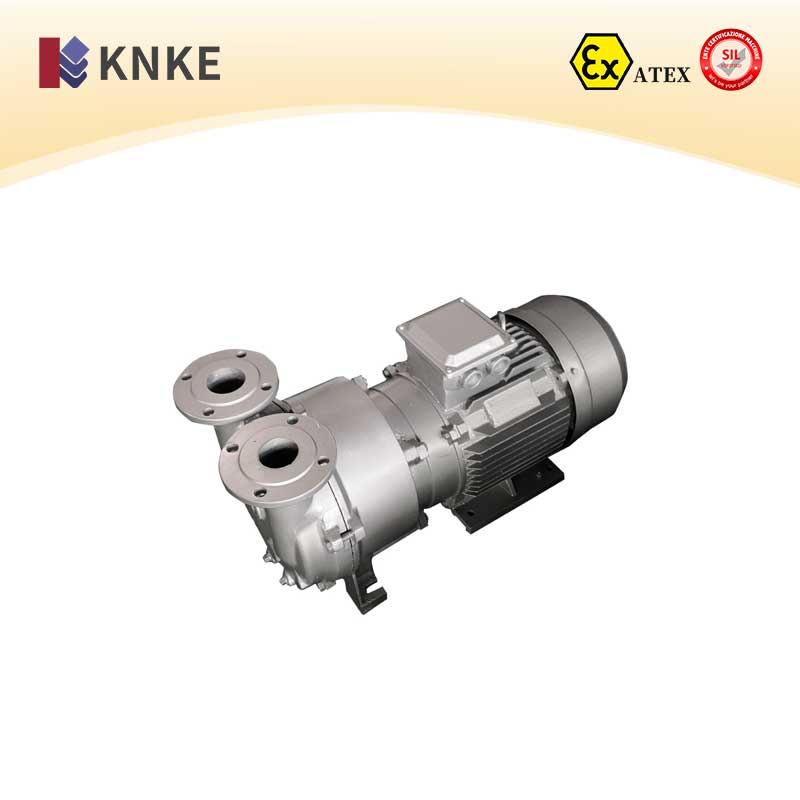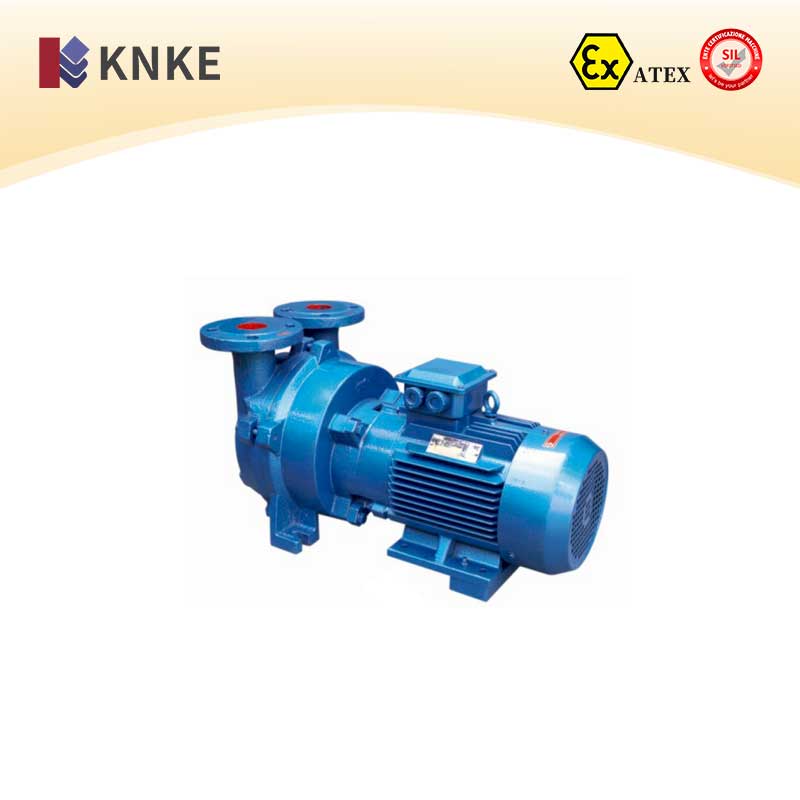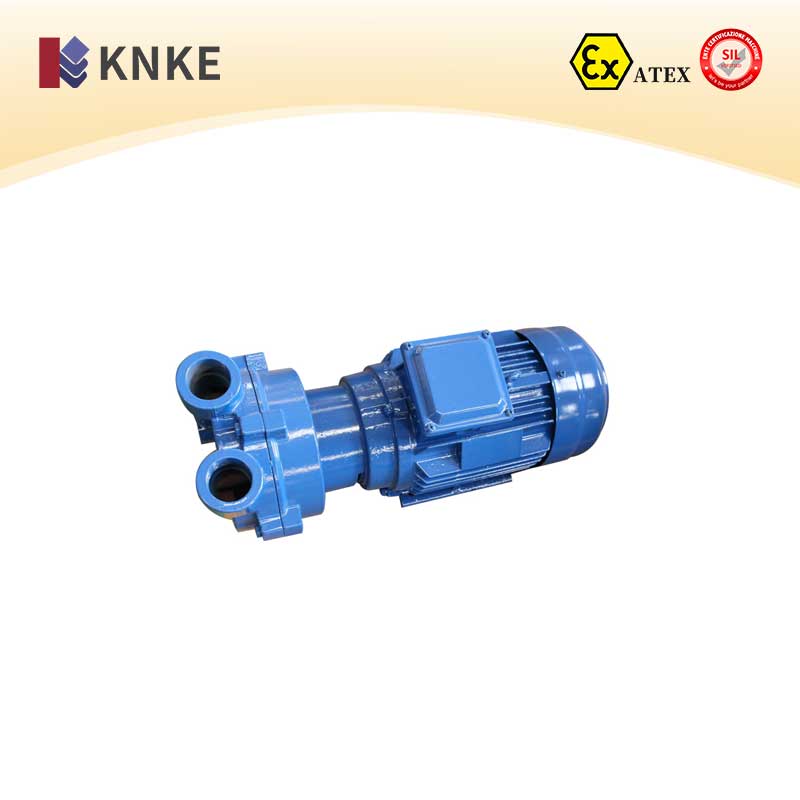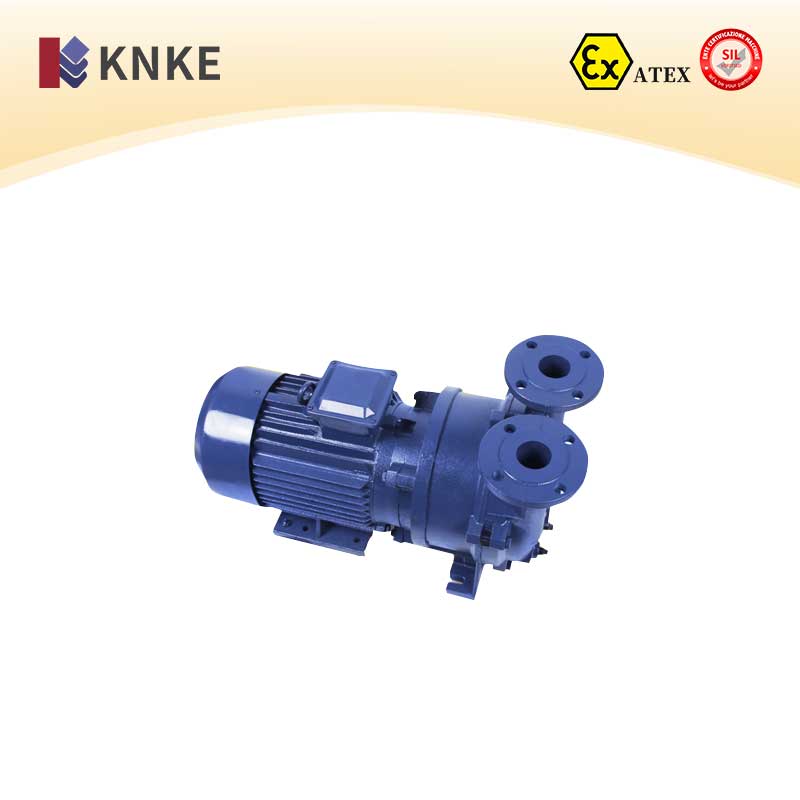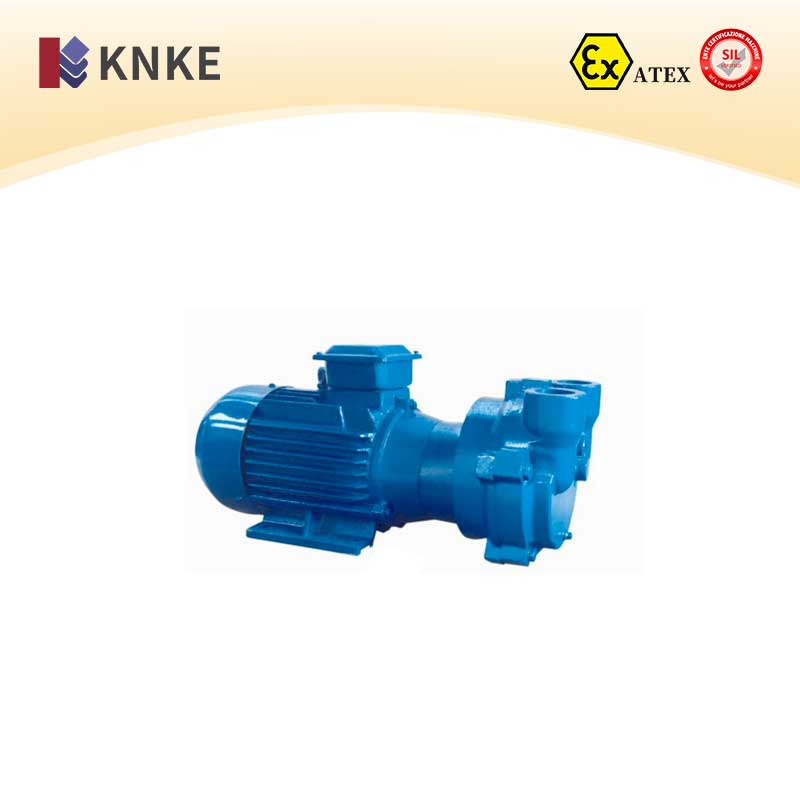Description
Overview of KNKE Imported Water Ring Vacuum Pump
KNKE’s Imported Water Ring Vacuum Pump effectively extracts or compresses non-corrosive, insoluble gases and liquids. It works by utilizing a centrifugal force that forms a rotating water ring within the pump casing, which allows it to create a vacuum or pressure. This pump is commonly used in industries such as mechanical engineering, petrochemicals, pharmaceuticals, food processing, and electronics.
Its isothermal compression process ensures safe operation when handling explosive gases. The pump also features an automatic gas-liquid separation system. This system allows for continuous operation, reducing risks associated with overheating, and it maintains performance by supplying cold water to the separator.
Key Features of KNKE Imported Water Ring Vacuum Pump
- Safe for Explosive Gases: The isothermal compression process minimizes explosion risks, making it ideal for explosive gases.
- Reliable Gas-Liquid Separation: The pump comes with an automatic gas-water separator, ensuring smooth, continuous gas flow.
- Temperature Control: The separator is equipped with a cooling system, ensuring that the pump’s working temperature remains stable.
- Versatile Application: Suitable for industries such as petrochemicals, pharmaceuticals, food, sugar production, and electronics.
- Durability: Built with high-quality materials like WCB, 304, and 316 stainless steel for long-lasting performance.
Technical Parameters
| Specification | Value |
| Nominal Diameter | 70-175/70-150 mm |
| Flow Rate Range | 0.12-27 m³/min |
| Head Range | 10-32 m |
| Power Range | 1.5–18.5 kW |
| Speed Range | 2900 r/min |
| Temperature Range | -20℃ to 120℃ |
| Working Pressure | ≤1.6 MPa |
| Pump Body Material | WCB, 304, 316 |
Working Principle of KNKE Imported Water Ring Vacuum Pump
The pump operates through centrifugal force. The impeller is eccentrically mounted in the pump casing. As the impeller rotates, it forces the water outward, forming a rotating water ring inside the casing. This water ring creates progressively expanding and contracting spaces between the impeller blades, lowering the pressure and drawing in gas. As the water ring shrinks, the gas is compressed and expelled.
To maintain optimal operation, the pump needs a continuous water supply to cool the system and replenish the water consumed during the process.
When the exhaust gas is not used, it enters the gas-water separator, where the gas and water separate. The gas is then expelled, and the water is returned to the pump for reuse. A cooling system continuously supplies cold water to the separator to prevent overheating and ensure efficient performance.
Pump Structure
The KNKE Imported Water Ring Vacuum Pump consists of several key components, including the pump body, end covers, impeller, and shaft. The intake and exhaust pipes connect to the pump chamber through holes in the end covers. The impeller, fixed to the shaft, rotates eccentrically inside the casing.
- Sealing: The pump uses mechanical seals in the packing cavity to ensure a tight seal. Packing glands further enhance sealing performance.
- Water Supply: A water supply pipe ensures that enough water circulates inside the pump for the formation of the water ring. This water can be sourced from the gas-water separator.
- Ball Valve: The end cover includes a rubber ball valve, which expels gas before it reaches the exhaust pressure, reducing power consumption and improving efficiency.
Maintenance of KNKE Imported Water Ring Vacuum Pump
- Bearing Inspection: Check bearings regularly for proper lubrication. The working temperature should not exceed 55°C–60°C. Lubricate bearings 3–4 times annually and clean them once a year.
- Seal Maintenance: Tighten packing seals periodically. If the seals wear out, replace them. If using mechanical seals, inspect for leaks and replace damaged parts as necessary.
- Water Supply: Maintain a constant supply of fresh water to regulate the pump’s temperature and ensure optimal operation.
Disassembly and Assembly Instructions
Disassembly:
- Start from the non-coupled end and follow this order:
- Disconnect the connecting pipes (if applicable).
- Remove the bearing covers and packing glands.
- Disconnect the pump body and end covers.
- Remove the impeller, shaft, and bearings.
- Clean the mating surfaces and threads and apply lubricating oil as necessary.
Assembly:
- Follow the reverse order of disassembly. Pay special attention to the clearance between the impeller and the end cover’s plate. Adjust the clearance by adding gaskets, ensuring it remains consistent on both sides.

